The History of Yoga
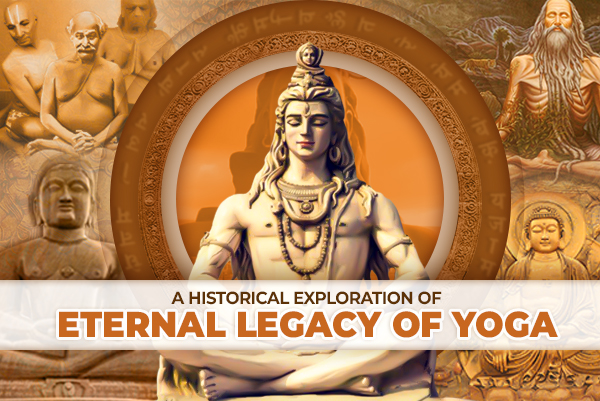
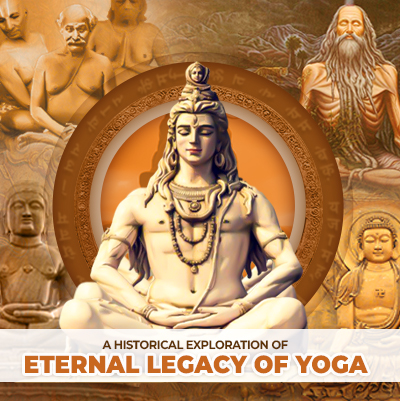
Table of Content
Introduction - Bharat and Yoga
After a long day at school, Kavya returned home eager to unwind. Turning on the TV, she was met with a heated debate among politicians arguing over who truly belonged to Bharat's ancient roots. Confused by the divisive rhetoric, Kavya switched channels, hoping for something less contentious.
To her surprise, the next channel flashed breaking news: "Rakhigarhi Reveals Vedic Saraswati Civilization, Challenges Harappan Narrative." The report detailed recent findings suggesting Rakhigarhi, a vast archaeological site in Haryana, might be more significant than previously thought. It highlighted evidence linking the site to the ancient Saraswati River region and the Vedas, challenging the long-held belief in the Harappan Civilization as Bharat’s primary ancient culture.
Stunned by the conflicting narratives, Kavya pondered the implications. Was history being rewritten before her eyes? Did the truth lie in Rakhigarhi's ancient relics, buried deep beneath layers of academic debate? As she watched pundits argue over historical labels and interpretations, Kavya couldn't help but wonder: "Do we really want to know the truth or are we still slaves to British-era propaganda?"
You might be wondering why I'm talking about Kavya and a debate on Bharat's history when you're here to learn about history of Yoga. Well, everything is connected.
The history of yoga is inseparable from the history of Bharat; shedding light on one will reveal the other.
Vedic Era- Myth vs Truth
"श्रीभगवानुवाच |
इमं विवस्वते योगं प्रोक्तवानहमव्ययम् |
विवस्वान्मनवे प्राह मनुरिक्ष्वाकवेऽब्रवीत् ||"
Translation (Bhagavad Gita Chapter 4, Verse 1):
"Sri Bhagavan said: I taught this imperishable yoga to Vivasvan (the Sun God); Vivasvan taught it to Manu, and Manu in turn taught it to Ikshvaku."
The word Yoga comes from Vedas. Talking about the history of Vedas, you never know when it started. One tradition of Sanatan Dharma says it probably started with Brahman. Or maybe it existed even before that—who knows? Even the Rig Veda is not sure about it.
Scientific evidence, which can be influenced by different ideologies, traces yoga back to around 2700 BC in the Indus-Saraswati valley civilization. Archaeologists have found seals and fossils depicting people practicing yoga or meditation. This suggests that yoga was practiced even in those ancient times, though we have no written records from that period.
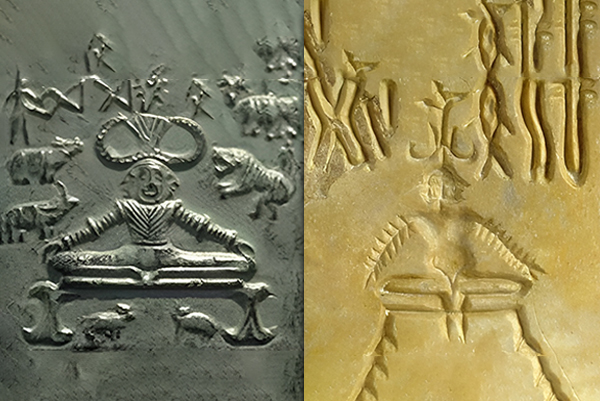
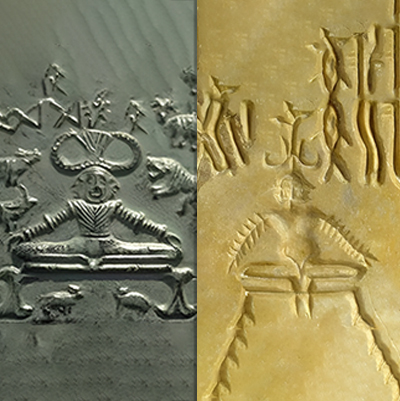
Followers of these traditions claim that yoga is as old as the history of Shiva. Some modern Bhartiya teachers, like Sadhguru, say Shiva lived 60,000 years ago. We don't make any specific claims, but we acknowledge yoga's ancient roots.
There is a big difference in how history is viewed. In Bharat, we believe our history spans millions of years, with yoga being a key part of it. Yoga was present in the lives of many historical figures of Bharat, such as Shiva, Rama, and Krishna. These figures practiced yoga, embedding it deeply into our rich history.
Prominent Yogic Rishis in Vedic Era
- Rishi Saindilya - Known for his teachings in Bhakti Yoga, Rishi Saindilya emphasized devotion and love for the divine as the way to achieve spiritual liberation. His work was crucial in spreading and developing Bhakti Yoga practices.
- Rishi Agastya - Mentioned in the Rig Veda and other texts, Rishi Agastya contributed to spiritual practices including yoga, meditation, and Vedic rituals.
- Rishi Vamadeva - Also mentioned in the Rig Veda, Rishi Vamadeva is known for his hymns that discuss the unity of Atman (the individual soul) with Brahman (the universal consciousness), which is foundational to early yogic philosophy.
- Rishi Bharadwaja - This sage, mentioned in the Rig Veda, provided hymns and teachings that emphasize meditation and self-realization within the Vedic spiritual context.
- Rishi Atri - Known from the Atharva Veda, Rishi Atri contributed hymns and teachings that explore meditation and spiritual knowledge as part of yoga practice.
- Rishi Gautama - Known for his teachings on Dharma Sutras, Rishi Gautama's work includes aspects of yoga and meditation, contributing to Vedic philosophy.
- Rishi Kapila - Founder of the Samkhya school of philosophy, Rishi Kapila's teachings laid the foundation for understanding the dualistic nature of reality, which significantly influenced yoga philosophy.
- Rishi Yajnavalkya - Contributed significantly to yoga philosophy through texts like the Yajnavalkya Smriti and the Brihadaranyaka Upanishad, emphasizing self-realization and consciousness.
- Rishi Gargi Vachaknavi - A Vedic sage mentioned in the Brihadaranyaka Upanishad, known for her philosophical inquiries that contributed to early yoga concepts.
- Rishi Vasishtha - The teachings of Sage Vasistha to Lord Rama were part of an oral tradition and were later compiled into the written form we know as the Yoga Vasistha, a text that explores reality, consciousness, and the path to liberation (moksha) through yoga and meditation.
- Rishi Patanjali - Author of the Yoga Sutras, Rishi Patanjali codified the practice of Ashtanga Yoga, outlining the eight limbs of yoga as a path to spiritual enlightenment and self-realization.
- Rishi Narada - An ancient sage known for his teachings on Bhakti (devotion), Rishi Narada integrated spiritual practices that align with yoga principles.
- Rishi Vedavyasa (Vyasa) - Compiler of the Vedas and author of the Mahabharata and Puranas, Rishi Vedavyasa's works have had a profound influence on yoga and spiritual philosophy.
However, Western perspectives often consider these stories as myths and usually date human history to only 2500-3000 years ago, based on their own historical figures. This difference might be because acknowledging a longer history could challenge their sense of historical importance. Despite these differences, we celebrate our long history and recognize that yoga was part of our culture even in the Vedic era.
End Of The Vedic Period: Continuation of Yogic Tradition
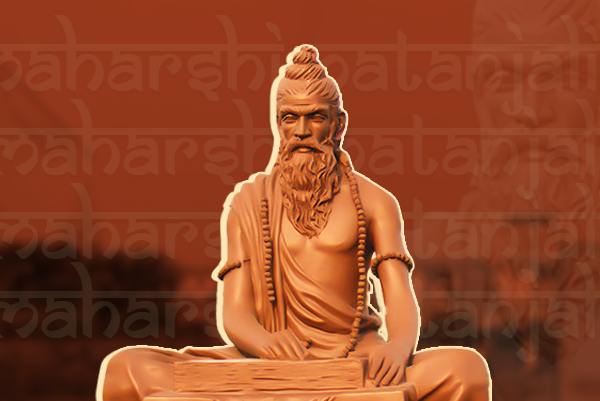
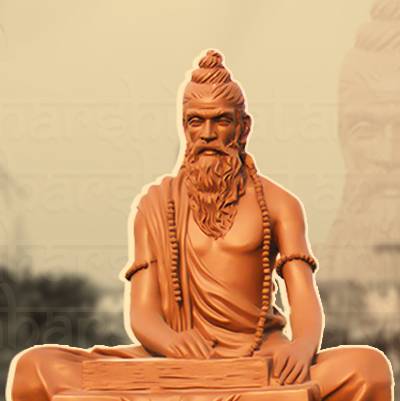
When Kalyuga began over 5125 years ago, many philosophies, known as Darshans (Schools of Thought), had already developed to propagate the teachings of the Vedas. Temples were established with the purpose of spreading awareness of specific philosophical teachings (Darshans).
Most influential philosophies that directly talks about Yoga were:
- Vedanta: Vedanta Means End of Vedas or Conclusion of Vedas. Mainly composed in three texts: The Upanishads, Brahma Sutra, Bhagwat Gita. It majorly talks about four kinds of Yoga as Gyan Yoga, Bhakti Yoga, Karma Yoga & Raj Yoga. We will further discuss each in philosophy in upcoming sections of Blogs.
- Samkhya Yoga: Founded by Sage Kapila, Samkhya is a dualistic philosophy that distinguishes between Purusha (consciousness) and Prakriti (matter). Samkhya provides the theoretical foundation for the Yoga school. While it does not prescribe specific yogic practices, it emphasizes the importance of discriminative knowledge (Viveka) to separate Purusha (consciousness) from Prakriti (matter). This intellectual clarity is crucial for the practice of yoga.
- Yoga Philosophy by Patanjali: When Yoga was integral part of all school of thoughts, Maharishi Patanjali developed another. Patanjali codified the practices and principles of yoga into a coherent system known as Ashtanga Yoga or the Eightfold Path (196 formulas). Through his developments, he made yoga similar to a Theology, Easy to Learn, Propagate and spread.
Classical Period - Jainism and Buddhism Timeline
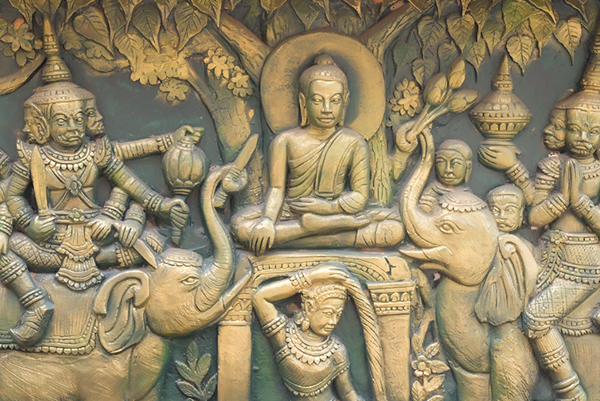
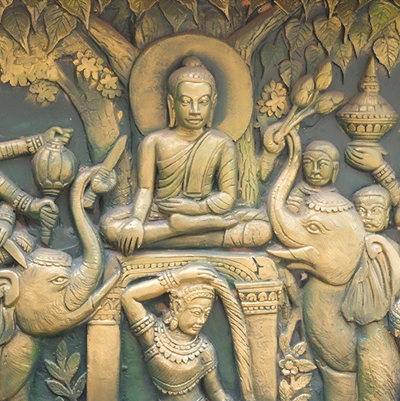
Both traditions bear significant influence from Vedic and Astanga Yoga, which evolved during an era where the concept of Atman, or the individual soul, was sometimes misconstrued or misused by the priestly class of society.
In Jaina Yoga, the teachings stem from Mahavira, who lived during 599–527 B.C. He was considered the 24th tirthankara, a revered spiritual leader. Mahavira's path to enlightenment involved rigorous ascetic practices, like extreme austerity or tapas, which he dedicatedly followed for twelve years. Within Jainism, karma is deeply explored, explaining how the soul gets entwined with karmic matter and how purification leads to freedom. In Jainism, yoga is often understood as the soul's fundamental activity, which can either accumulate karma or pave the way for liberation.
Turning to Buddhist Yoga, it traces its roots to Gautama Buddha, who lived around 563 B.C. After rejecting harsh asceticism, Buddha advocated a balanced approach known as the "middle way." His journey towards liberation, outlined in the Eightfold Path, starts with cultivating "right view" and includes methods to alleviate suffering. Meditation holds a central position in Buddhist traditions, with terms like yogin and schools such as Yogachara highlighting its importance. Through meditation, Buddhists aim to find inner peace and break free from the cycle of suffering, aligning with the essence of yoga in their spiritual quest.
Both of these were popular traditions developed in classical periods. In both Buddhism and Jainism, the emphasis on meditation (Dhyan/Dhyana), concentration (Dharna), and absorption (Samadhi) indeed holds paramount importance.
Post-Classical Period - Survival Era
During this period, Bharat faced invasions from the western borders, lacking a strong political defender like Chanakya from ancient times. The land, known as Bharata, witnessed a fragmentation of philosophies, primarily between Buddhism and Hinduism.
- Advaita Vedanta (8th century CE): Adi Shankaracharya formalizes this non-dualistic school, emphasizing Jnana Yoga and meditation for realizing the unity of Atman and Brahman.
- Tantra and Hatha Yoga (9th–15th century CE): Tantric texts like the Hatha Yoga Pradipika and Gheranda Samhita detail physical and energetic practices for spiritual awakening.
- Vishishtadvaita Vedanta (11th century CE): Ramanujacharya develops this qualified non-dualistic school, emphasizing Bhakti Yoga.
- Dvaita Vedanta (13th century CE): Madhvacharya establishes this dualistic school, emphasizing Bhakti Yoga.
- Shuddhadvaita (15th century CE): Vallabhacharya's Shuddhadvaita philosophy emphasizes pure non-dualism, promoting devotion to Krishna through the Pushti Marg (path of grace).
- Achintya Bheda Abheda (16th century CE): Chaitanya Mahaprabhu's Achintya Bheda Abheda philosophy emphasizes the simultaneous oneness and difference between the individual soul and God, focusing on the ecstatic devotion to Radha and Krishna through the chanting of the holy names.
- Achintya Bheda Abheda can be understood through the analogy of the sun and its rays. The sun and its rays are both distinct (bheda) and non-distinct (abheda) simultaneously. The sun's rays are an inseparable part of the sun, sharing its qualities, yet they are also distinct entities emanating from the sun. Similarly, in Achintya Bheda Abheda, the individual soul (jiva) and the Supreme (Krishna) are one and different at the same time—sharing the same divine essence, yet maintaining their individual identities.
- Bhakti Movement: Flourishing devotional movement emphasizing personal devotion and Bhakti Yoga. Saints like Tulsidas, Kabir, and Mirabai contribute significantly in creating Bhakti Marg, a path to liberation, aiding Bhartis in attaining Liberation through service, love & devotion.
Adi Shankar unified Bharata by engaging in debates with Buddhist monks, showing them that despite different paths, our shared values aim for liberation.
Through his debates, Adi Shankar showed that different spiritual paths, like Buddhism, are all part of the same timeless and universal Sanatan Dharma. They all aim to guide seekers towards ultimate freedom and liberation. He created an ideological boundary of Vedanta across the Bhartiya Subcontinent, much like the boundaries of capitalism (Europe/America) and communism (Russia/China) that exist in the world today.
Modern Period
Modern Period (1800–Present)
- Integral Yoga (20th century CE): Sri Aurobindo develops this synthesis of traditional yogic paths, including Karma Yoga, Bhakti Yoga, Jnana Yoga, and Hatha Yoga.
- Kriya Yoga (20th century CE): Paramahansa Yogananda popularizes this advanced pranayama and meditation system in the West through his book "Autobiography of a Yogi".
- Global Spread of Hatha Yoga (20th–21st century CE): Hatha Yoga becomes widely popular worldwide, evolving into various modern styles and schools.
- Role of Swami Vivekananda (late 19th–early 20th century CE): Swami Vivekananda played a crucial role in introducing yoga and Vedanta to the Western world. His speeches at the Parliament of the World's Religions in Chicago in 1893 and subsequent lectures across the United States and Europe sparked a widespread interest in Bhartiya spiritual practices. He emphasized the unity of all yogic paths and their relevance in achieving self-realization and harmony. His efforts laid the foundation for the global appreciation and practice of yoga, making it accessible to people of all cultures and backgrounds.
Yoga in 21st Century
Global Popularity and Modern Adaptations
In the 21st century, yoga has experienced a remarkable resurgence and transformation. It has evolved from its traditional roots into a global phenomenon, practiced by millions of people worldwide. Modern adaptations of yoga have emerged, catering to diverse lifestyles and preferences. Styles such as Power Yoga, Vinyasa Flow, and Restorative Yoga offer various approaches to suit different needs, whether for fitness, relaxation, or spiritual growth.
Technological Integration
The integration of technology has significantly influenced the practice of yoga in the 21st century. Online platforms, apps, and virtual classes have made yoga accessible to a broader audience. Practitioners can now join live sessions, follow recorded tutorials, and even participate in global yoga communities from the comfort of their homes. This digital transformation has democratized yoga, breaking geographical barriers and enabling continuous learning and practice.
Popular Yoga Masters
- B.K.S. Iyengar - His method, Iyengar Yoga, emphasizes precision and alignment, making yoga accessible to people with different physical capabilities.
- K. Pattabhi Jois - The founder of Ashtanga Yoga, he brought a dynamic and rigorous style of yoga to the global stage.
- Sadhguru Jaggi Vasudev - Through the Isha Foundation, Sadhguru has promoted yoga as a tool for inner transformation and societal well-being.
- Baba Ramdev - His widespread yoga camps and television programs have brought yoga to the masses in Bharat and beyond.
- T.K.V. Desikachar - He emphasized the therapeutic aspects of yoga, making it a tool for healing and well-being.
Challenges Facing Yoga Today
- Commercialization: It has become more about making money than about its spiritual side. Nowadays, people judge yogis by how they look, which wasn't the point before. The commercialization of yoga has led to the dilution of its spiritual and philosophical essence. Yoga classes are sometimes marketed purely as fitness regimes, overlooking the holistic nature of the practice.
- Maintaining Authenticity: With the proliferation of online content, ensuring the authenticity and quality of yoga teachings has become a challenge. Not all online instructors have the necessary training or understanding of yoga's deep roots.
- Inclusivity: Yoga is considered a rich man’s business. While yoga has become global, making it truly inclusive and accessible to people of all backgrounds and abilities remains a significant task. To address this, governments, along with global bodies like the UN and WHO, should integrate yoga into school curricula. Just as children learn basic skills like brushing their teeth, they should also learn meditation, asanas, and pranayama.
Yogkulam’s Conclusion - Yoga is an Eternal Heritage for Humankind
Yoga has been a tool for solving human problems since spirituality was discovered. Different Yogic masters have come and discovered new solutions from it as per the need of that time. Its special quality lies in its timeless and universal nature, transcending race, ideology, and cultural boundaries.
क्या आप योग में करियर बनाने को लेकर "Confuse" हैं?
Join Free Webinar By Maneesh Sir
- Know About Opportunities in the Growing Yoga Sector.
- Learn from a Yoga Teacher with Over 15 Years of Experience.
- Special Offer for Webinar Attendees.

